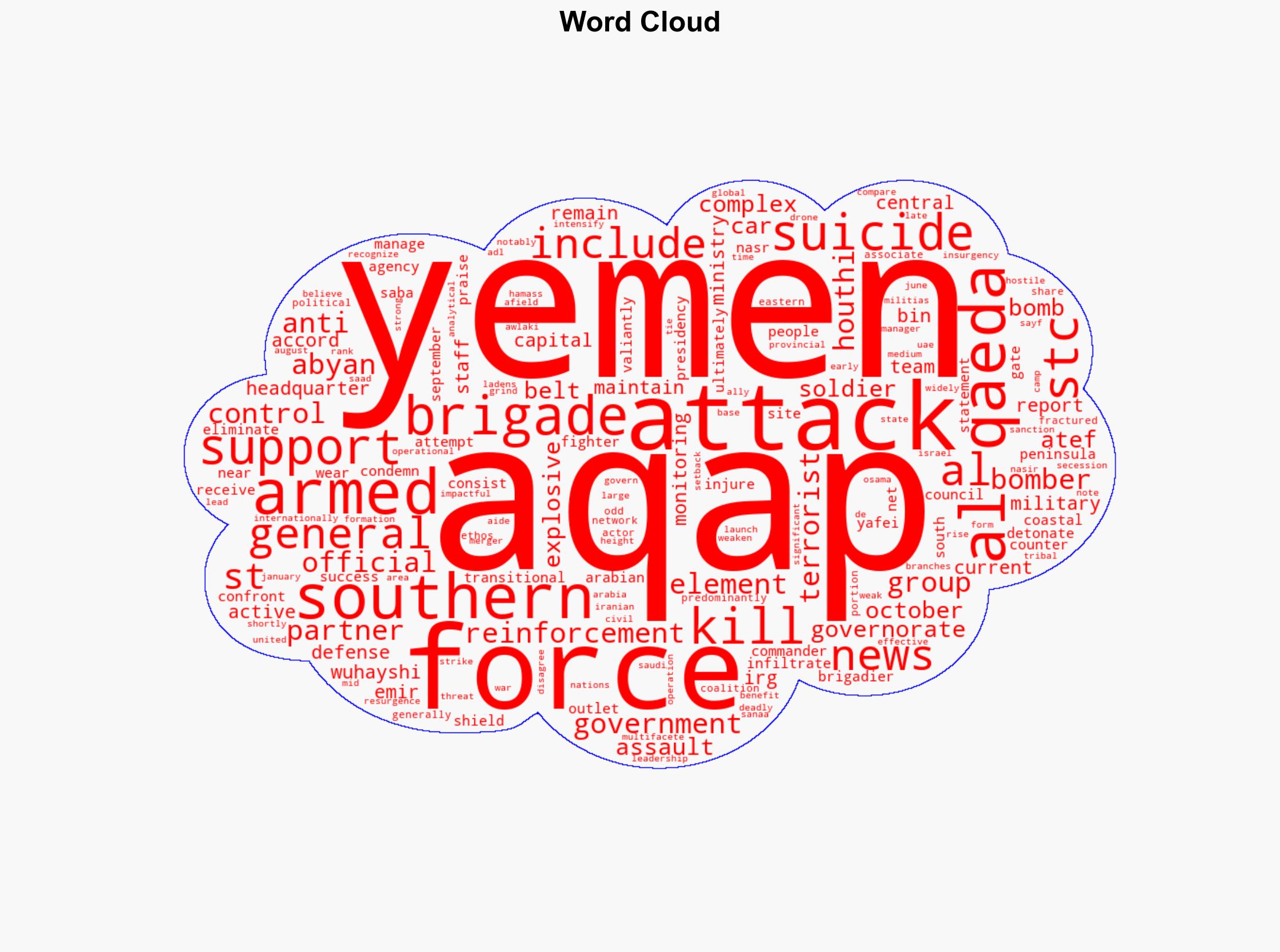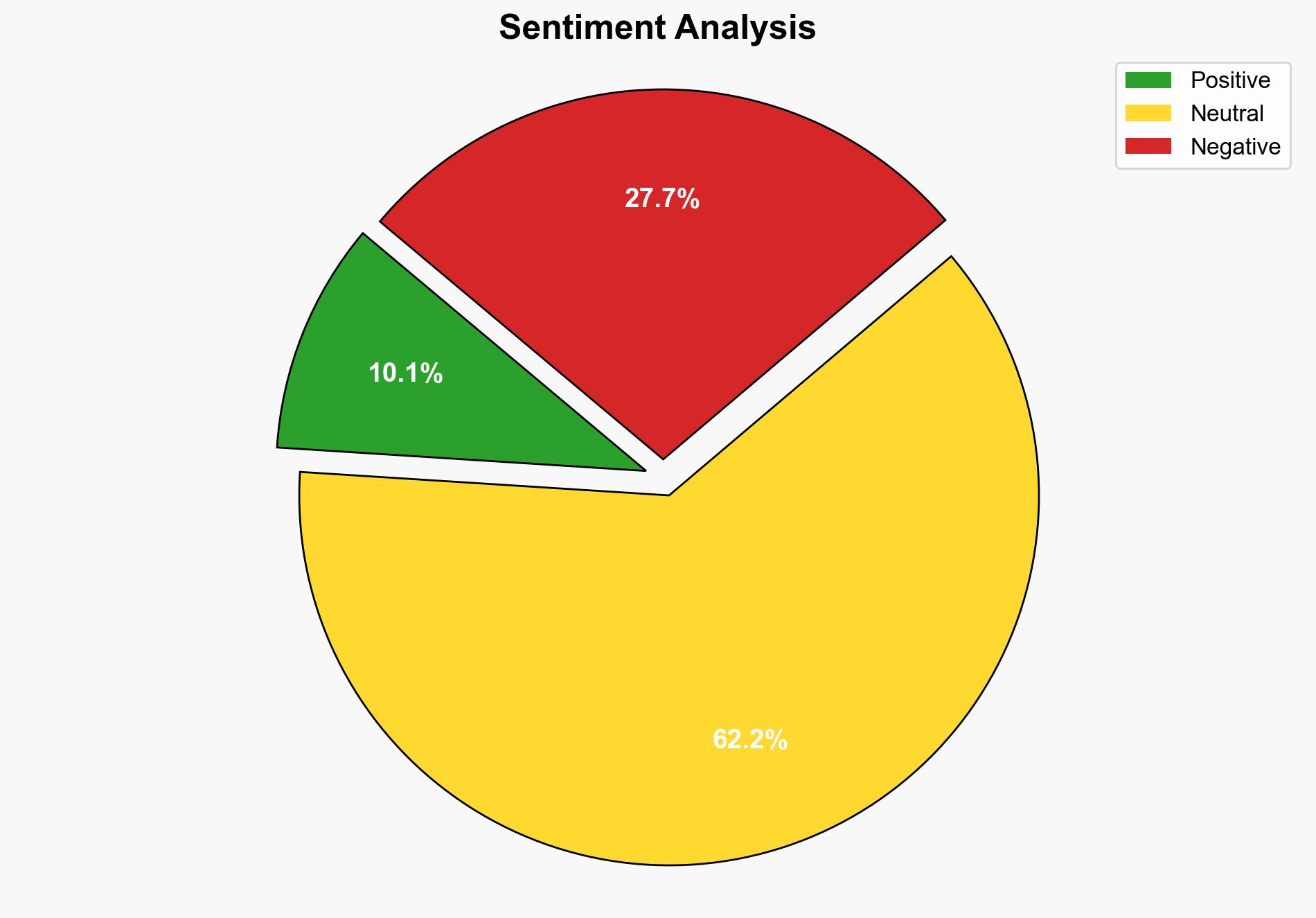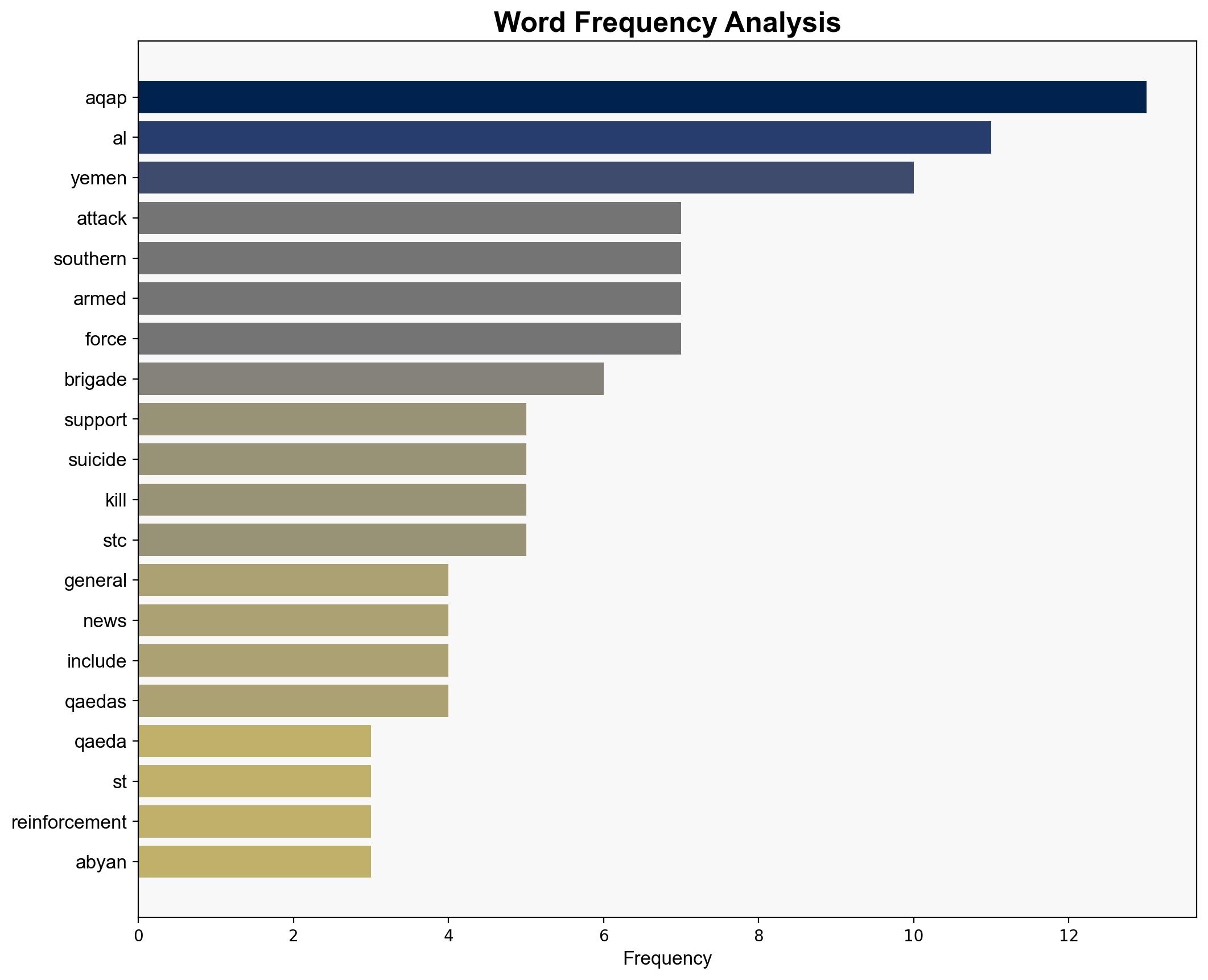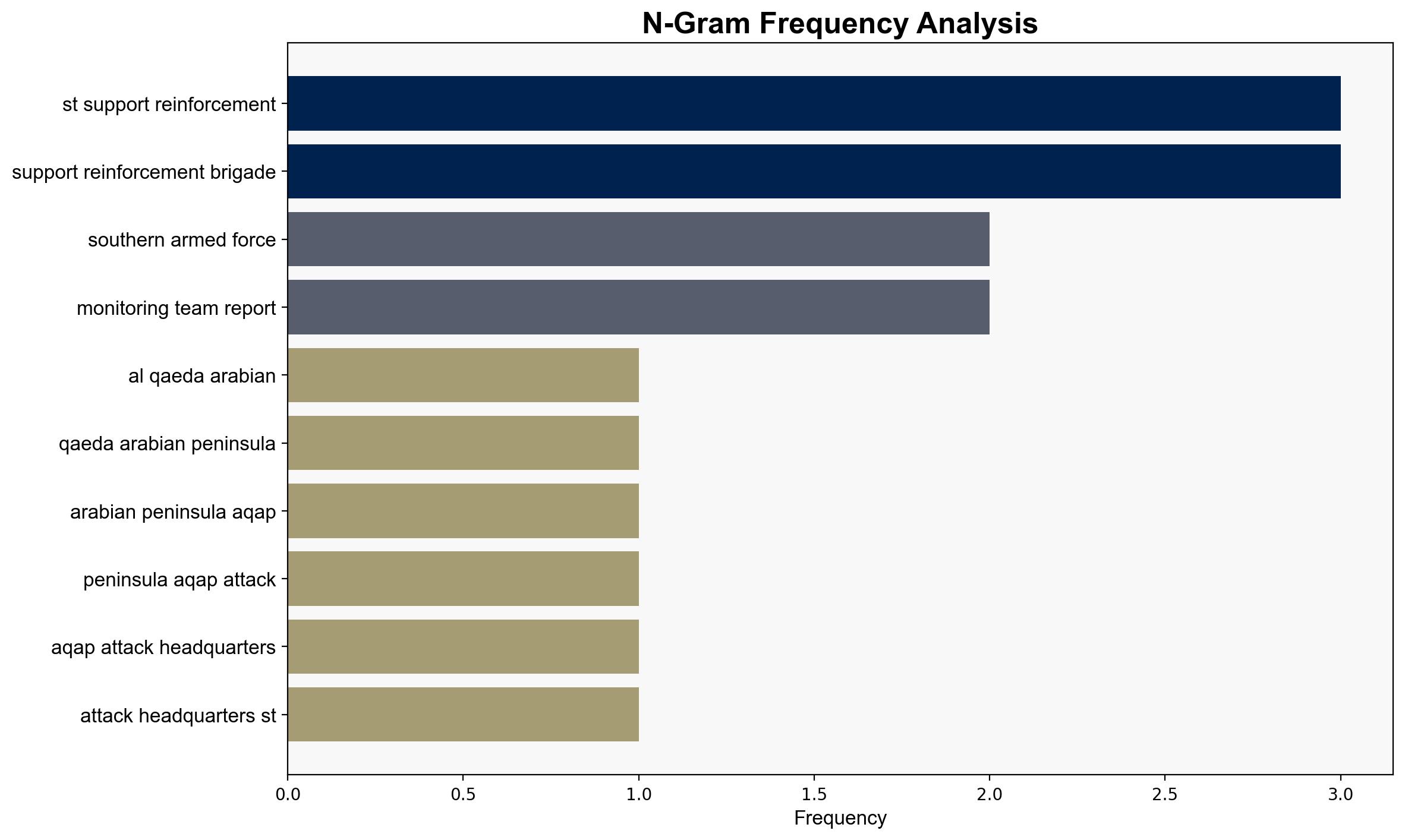Al Qaeda in the Arabian Peninsula kills 4 Yemeni soldiers in complex suicide assault – Longwarjournal.org
Published on: 2025-10-23
Intelligence Report: Al Qaeda in the Arabian Peninsula kills 4 Yemeni soldiers in complex suicide assault – Longwarjournal.org
1. BLUF (Bottom Line Up Front)
The most supported hypothesis is that AQAP’s attack aims to destabilize the Southern Transitional Council (STC) and exploit Yemen’s fractured political landscape. Confidence level: Moderate. Recommended action: Strengthen intelligence-sharing and counter-terrorism coordination among anti-AQAP factions in Yemen.
2. Competing Hypotheses
1. **AQAP seeks to destabilize the STC and exploit Yemen’s political fragmentation.** This hypothesis suggests that AQAP’s attack is part of a broader strategy to weaken the STC’s control in southern Yemen, leveraging the region’s political instability to expand its influence.
2. **AQAP is responding to recent military pressures and attempting to demonstrate operational capability.** This hypothesis posits that the attack is a reaction to recent setbacks and a demonstration of strength to maintain relevance and morale among its ranks.
Using ACH 2.0, the first hypothesis is better supported by the context of ongoing political fragmentation and AQAP’s historical patterns of exploiting such conditions. The second hypothesis is plausible but less supported by current intelligence.
3. Key Assumptions and Red Flags
– **Assumptions**: It is assumed that AQAP has the capacity to conduct complex operations despite recent setbacks. The STC’s control over southern Yemen is assumed to be a significant threat to AQAP.
– **Red Flags**: The potential underestimation of AQAP’s ties with local tribes or other factions. Lack of detailed intelligence on AQAP’s internal dynamics and decision-making processes.
– **Blind Spots**: Possible external support for AQAP from other regional actors is not addressed.
4. Implications and Strategic Risks
– **Patterns**: AQAP’s continued attacks indicate resilience and adaptability, posing a persistent threat to regional stability.
– **Cascading Threats**: Increased AQAP activity could lead to further destabilization, potentially drawing in external actors and complicating peace efforts.
– **Potential Escalation**: If AQAP perceives success, it may intensify attacks, targeting more strategic locations or international interests.
5. Recommendations and Outlook
- Enhance intelligence-sharing among the STC, IRG, and international partners to improve situational awareness and response capabilities.
- Support initiatives aimed at political reconciliation in Yemen to reduce AQAP’s ability to exploit divisions.
- Scenario-based projections:
- **Best Case**: Successful counter-terrorism operations weaken AQAP, reducing its operational capacity.
- **Worst Case**: AQAP capitalizes on political instability, increasing its territorial control and influence.
- **Most Likely**: Continued sporadic attacks by AQAP, maintaining a persistent threat but not significantly altering the balance of power.
6. Key Individuals and Entities
– Nasr Atef Al Yafei
– Saad Bin Atef Al Awlaki
– Sayf Al Adl
7. Thematic Tags
national security threats, counter-terrorism, regional focus





